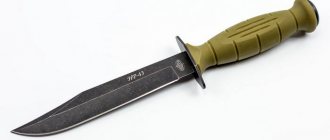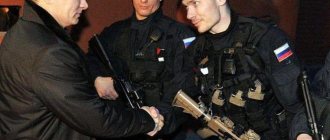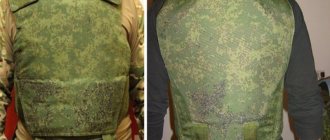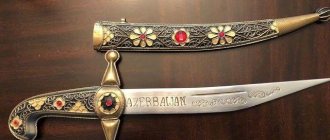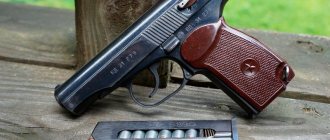For more than a hundred years, scientists in the field of military science have been trying to replace humans on the battlefield and assign their functions to a combat robot. Ideally, a smart mechanism should become a more functional replacement: be more accurate, durable, and most importantly, easily replaceable with another device.
A modern military robot is a special combat vehicle controlled by an operator or artificial intelligence (a set of algorithms), designed to destroy enemy personnel, armored vehicles, aircraft and ships.
QinetiQ, UK
The company was formed in 2001 when the UK Ministry of Defense split the Defense Evaluation and Research Agency (DERA) into two departments.
The first was called DSTL (Defense Science & Technology Laboratory). And the second part of DERA, responsible for most non-nuclear research, was renamed QinetiQ and prepared for privatization. It is now a public limited company (PLC) and has its headquarters in Farnborough in north-east Hampshire. It became one of the largest defense companies in the UK. In 2003, QinetiQ signed a long-term agreement (25 years) with the UK Ministry of Defense. And now the company supplies the British (and not only) army with innovative weapons, including robots.
TALON
is the name of a robotic platform that serves as the basis for creating robots for various purposes. They are called TALON family robots. In fact, the authors of the platform are Foster-Miller, which was acquired by QinetiQ. The manufacturer claims that this is one of the fastest platforms in production. It can move over rough terrain, overcoming water, snow, sand, and natural obstacles. Its weight can vary depending on the task performed: from 45 kg for combat missions to 27 kg for reconnaissance missions. The modular design allows TALON to be equipped with a variety of sensors, manipulators, tools and weapons. The company is now producing the fifth generation of robots on the TALON platform.
SWORDS
(Special Weapons Observation Reconnaissance Detection System) is the first robot from the TALON family to receive lethal weapons. Could be equipped with an M16 rifle, or an M249 SAW light machine gun of 5.56 mm caliber, or an M240 medium machine gun of 7.62 mm caliber, or a Barrett M82 semi-automatic rifle with a large-caliber 12.7 × 99 mm cartridge, or a six-barreled grenade launcher of 40 mm caliber, or a light four-barrel M202A1 FLASH 66mm flamethrower. In 2007, three examples with M249 machine guns were sent to Iraq, but were never used. After this, the US Army stopped funding robots and Foster-Miller created a different, more successful configuration - MAARS.
MAARS
(Modular Advanced Armed Robotic System) is a robot equipped with lethal weapons, which is designed for “reconnaissance, surveillance and target acquisition.” The first MAARS was shipped to the US Army in June 2008. The US Department of Defense immediately announced that any decision to use lethal weapons must come from the person who controls the robot. In the complete version, the robot was equipped with a number of cameras and sensors, an M240B machine gun with 450 rounds of 7.62 mm caliber and four M203 grenade launchers (could be loaded with various grenades, including smoke ones). The structure weighed about 167 kg. In some cases, the robot could be equipped with a loudspeaker, siren, laser blinding weapon and fire detection system. The MAARS battery lasted (depending on the intensity of use) for 3-12 hours.
General Robotics, Israel
Private company founded in 2009. Engaged in research, development and production of robotic platforms for defense markets in different countries.
DOGO
– a miniature reconnaissance robot equipped with lethal weapons. It is used not only in reconnaissance, but also in assault operations, when it is necessary to identify and eliminate a threat. For this purpose, it is equipped with a Glock26 self-loading pistol of 9 mm caliber and a laser pointer. The robot weighs 10 kg. 8 cameras with infrared illumination are responsible for the review. November 13 module for DOGO. Instead of a pistol, it contains a pepper spray canister to neutralize the target.
DONKEY
– a folding multifunctional robot for quick deployment on the ground. Designed for reconnaissance, route planning, and cargo transportation. Thanks to its modular structure, it can be equipped with a manipulator, which makes it suitable for engineering work. Weighs 40 kg, can carry loads up to 70 kg. It runs silently thanks to four electric motors - one for each wheel. Maximum speed – 16 km/h, range – 40 km. Can work on surfaces with a slope of up to 30º.
Boston Dynamics, USA
The company was founded by a group of engineers from the Massachusetts Institute of Technology in 1992 and specializes in engineering and robotics. Funds for the development of projects are received primarily from military sources. In December 2013, the company was bought by Google, but in March 2016 it decided to sell due to differences in views. Now the owner of Boston Dynamics is the Japanese corporation SoftBank Group.
BigDog
is the robot that has received the most attention from Boston Dynamics. Funding for the development of this robot was provided by the Defense Advanced Research Projects Agency (DARPA). As planned, it was supposed to be a four-legged robot that would help the American military carry heavy loads in areas where a tracked platform would be ineffective. This is how the robot turned out - it was able to carry weight up to 150 kg, climbed on a hill at a slope of 35 degrees and walked along with everyone else at a speed of 6.4 km/h. The weight of the device itself was 110 kg. It was equipped with a gyroscope, pressure and temperature sensors, lidar and video cameras. But it was powered by an internal combustion engine, which made a very loud noise. Later, the robot was modified - it became known as AlphaDog and became capable of carrying a load of up to 181 kg, while covering 32 km. But the noise of the internal combustion engine did its job - it was because of it that the US Army did not accept BigDog into service.
Spot
— essentially a modification of BigDog, which differs from its predecessor in its lightweight design and electric motor with battery. The noise level has decreased significantly, but along with it the autonomy and load-carrying capacity of the robot have decreased. It weighs 75 kg and can carry a load of up to 45 kg. There is an even more “stripped down” version - Spot Mini, which weighs only 25 kg, carries a load of up to 14 kg and can work for about an hour and a half without recharging. It has a 3D vision system and can be equipped with a manipulator arm to interact with objects. This is the quietest robot in the Boston Dynamics line.
SandFlea
- a miniature robot whose name can be translated as “sand flea.” The development was funded by DARPA and JIDO (Joint Improvised-Threat Defeat Organization). The robot weighs 5 kg and is capable of jumping up to 9.1 meters. Uses a gyrostabilizer to remain horizontal during the flight and land correctly. It is equipped with cameras, which makes it suitable for reconnaissance missions.
Atlas
- a humanoid robot that moves on two legs and is equipped with manipulators. It is designed to perform a wide range of tasks (including search and rescue) in an environment that is too dangerous for humans: in conditions of increased radiation, chemical contamination, extremely high or low temperatures. Atlas is able to operate even in difficult terrain with many obstacles, interacting with the environment. Early versions of the robot were tall - 183 cm, but modern ones have been “shortened” to 150 cm. The weight of the structure is 75 kg. Equipped with lidar (a system for obtaining information about the environment using light) and a stereoscopic vision system.
RiSE
is a climbing robot. This small six-legged robot, 25 cm long and weighing 2 kg, is capable of climbing vertical surfaces. He won’t be able to climb up smooth walls—he needs a rough, textured surface to have something to cling to. There are small metal hooks on each of the six legs to grip onto surfaces. A special feature of the robot is the ability to move not strictly vertically and change direction. RiSE uses its tail to maintain balance. The limbs are driven by electric motors and controlled by an on-board computer. They have built-in contact and position sensors. The hip differential uses a belt drive mechanism, making it easy to change the gear ratio. The development of the robot was sponsored by DARPA's biodynamics program.
RHex
is another six-legged robot from Boston Dynamics, but this time designed to overcome ground obstacles. With a height of 14 cm and a weight of 12 kg, it can be used in search and rescue operations. Equipped with cameras (including IR) and lighting. Works in mud, sand, grass, wetlands and overcomes rocks, downed trees, wires and ladders. The symmetrical design allows the robot to be used even if it turns over. Controlled remotely at a distance of up to 700 meters. Funds for development were allocated by DARPA and the US Army Rapid Equipping Force.
WildCat
is the fastest autonomous four-legged robot on the planet. It reaches speeds of up to 32 km/h (the previous record was 21 km/h in 1989). Equipped with an engine that runs on methanol and is quite noisy. There is also an IMU sensor, contact, proprioception and visual odometry sensors to monitor posture stabilization while running. Uses laser finders to determine altitude. The weight of the robot is 154 kg. The project is sponsored by DARPA's Maximum Mobility and Manipulation program.
Development of military robotics
In Russia, military mechanisms began to be used starting from the middle of the last century. During the Finnish War, teletanks were used, which were controlled remotely, and sapper vehicles have been used for more than 40 years.
Modern robots are not created to replace people in combat, but to carry out technical and intelligence work (also to help the police and special forces). This is justified by the fact that in combat it is impossible to repair imperfect and vulnerable automated systems. For this reason, the authorities are in no hurry to send them to hot spots, where the mechanisms will quickly fail.
Most military combat vehicles are future projects or potential prototypes. The United States occupies the first place in the creation of automated technology. Robotics have been created in this country since the Cold War. Russia is also seeking to develop and implement similar technologies in its armed forces.
At this stage, most inventions require specialist management. A person can command the robot soldier from a distance or while sitting in it. Thus, military developments are limited in their capabilities and less independent than machines for everyday life and industry.
JSC "Izhevsk Radio Plant", Russia
The radio plant in Izhevsk was created in 1958 and among its first products produced radio receivers. Now it is a high-tech enterprise that develops and manufactures satellite monitoring systems, video surveillance and automation systems, radio navigation and telecommunications equipment, satellite communications equipment and much more.
Mobile robotic complex (MRC)
- a robotic platform designed for reconnaissance, target detection and fire support. The MRK was first presented at the Russia ArmExpo exhibition in 2013. Essentially this is the same as TALON from QinetiQ, but the Russian version is clearly larger. The weight of the robotic complex in running order is 1100 kg. It can work autonomously for up to 10 hours and cover 250 km. The Izhevsk MRK is equipped with a 12.7 mm heavy machine gun. The platform can also be equipped with a Kalashnikov tank machine gun (PKT) of 7.62 mm caliber or mounted grenade launchers AG-17A and AGS-30 of 30 mm caliber. In addition, it is equipped with a laser rangefinder, weapon platform gyrostabilizers, a thermal imager and a ballistic computer for firing at any time of the day in any weather conditions. A rotating platform equipped with video cameras (including IR) ensures the capture and tracking of ten targets simultaneously. The complex can perform tasks at a distance of up to 5 km from the operator at temperatures from -40°C to +40°C. Developed jointly with OJSC NPK UralVagonZavod.
Continued review
Automation: everything for people
In the field of automation and performance technology, projects related to reducing risks for a soldier on the battlefield and facilitating his daily activities in the rear are grouped.
Experiments are most active in the field of logistics. In particular, automated trucks with a “master-slave” function are already being tested. A large-scale demonstration of the capabilities of robotic supply convoys is expected in 2022.
foto-1
Automated tractor Oshkosh PLS M1075A1 equipped with a master-slave system during testing
Photo: flickr.com/US Army
Robot at its best: a machine will replace people in hazardous industries
The device will be able to perform the functions of installers, welders and loaders
At lower levels, units acquire universal transport and combat platforms such as MUTT, Mission Master UGV or THeMIS. Particular attention is paid to supplying units operating in difficult to reach terrain and in limited conditions (cities, jungles, mountains, etc.), where the help of such “robomuls” will be invaluable.
Another area is the so-called risk-related missions. The already familiar sapper robots will be supplemented by machines capable of operating in conditions of radiation, chemical and biological hazards, as well as “assault robots.” The latter are likely to be smaller automated versions of engineering clearance vehicles like the American M1150 Assault Breacher Vehicle (ABV) or the Russian IMR-3.
And finally, the last thing is labor-intensive and monotonous activity. They want to free military personnel partially or completely from such “classical” army tasks as loading, unloading, carrying ammunition, excavation work or construction.
foto-2
In France, work has begun on the development of a robotic engineering armored vehicle - VBAE (Véhicule blindé d'aide à l'engagement)
Photo: flickr.com/French Army
Man Tank
Rostec presented an exoskeleton for the “soldier of the future”
Despite the image of a humanoid robot replicated in popular culture, the trend is rather the opposite. Within the framework of existing and developing concepts, people are becoming more and more “machined.”
At the macro level, even teams of professional mercenaries or programs for equipping and training national armies are considered as tools for “Remote Warfare”. From the point of view of this concept, there is no significant difference, for example, between a cruise missile and a squad of “soldiers of fortune.” Both are remote weapons that can be used in certain conditions.
foto_4
Automated convoy - an armed Mission Master UGV escorts a transport with the wounded, soldiers move nearby
Photo: flickr.com
In fact, the Americans named “stand-off” as one of the main priorities for improvement in preparation for future combat operations.
British media called artificial intelligence a new “nuclear bomb”
At the micro level, there are approaches that view the unit and even each soldier as integrated combat platforms. The idea is that all systems and elements of a soldier's equipment are connected together and will interact with him, with each other and with the soldiers in his unit. As a result, each soldier becomes part of a complex combat system, such as a tank or a combat helicopter. The only difference is that the elements of such a “tank” are spaced apart and move on foot.
